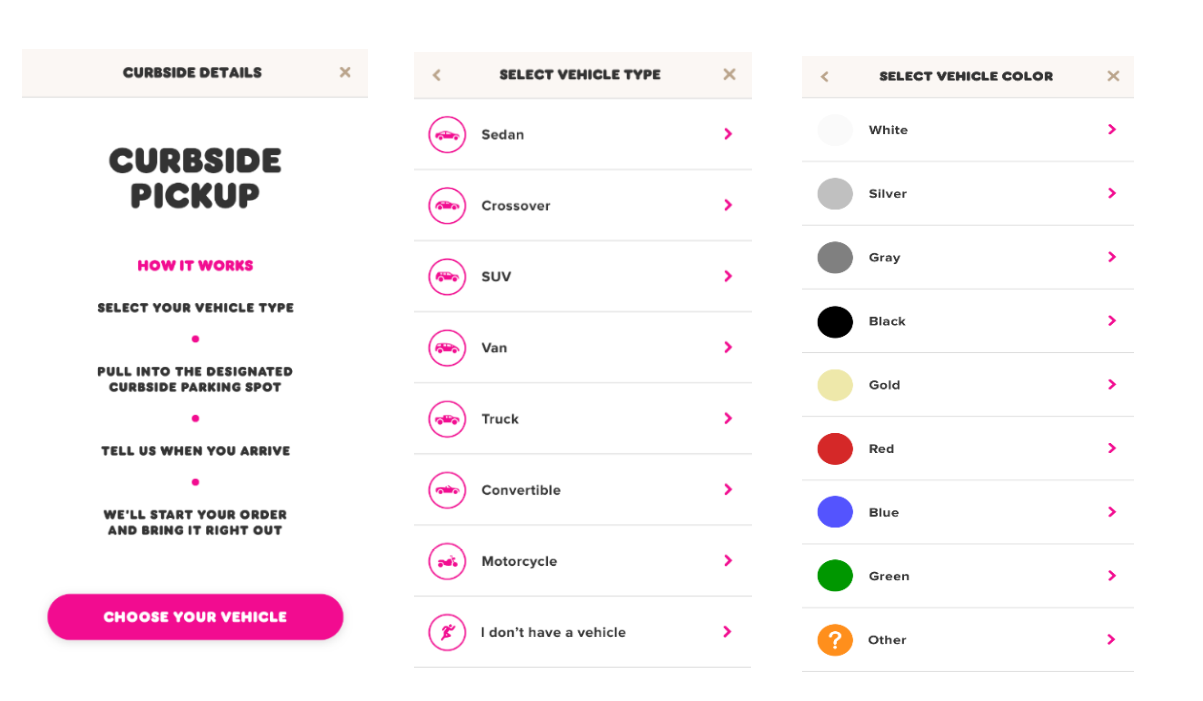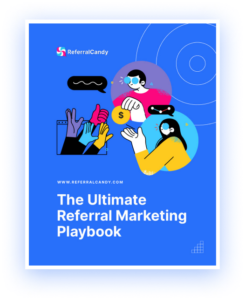Brothers-in-law Burt Baskin and Irv Robbins opened the first Baskin-Robbins in 1945. Not wanting to be like other ice cream shops—offering only vanilla, chocolate, and strawberry—they came up with a unique twist: the 31 flavors concept.
For years they created a new ice cream flavor for each day of the month. Now 1300 flavors and 75 years later, Baskin-Robbins is the world’s largest ice cream store chain with over 2500 shops in the United States and another 5700 worldwide.
But large chains still need to be concerned about customer loyalty of course, especially if your closest competitors are fan-favorites Ben and Jerry’s and Haagen-Dazs.
Click to Jump
How Ice Cream Brands Build Customer Loyalty
There’s a ton of places to go for a cold treat these days—frozen custard, frozen yogurt, and gelato shops, plus healthier options like bubble tea, juice and smoothie bars. And don’t forget Starbucks frappuccinos, or their equivalent, at other coffee shops.
With all that competition, it’s no wonder longtime brands have to do a lot more than make great ice cream to retain and attract customers.
Over 42 years, Ben and Jerry’s built a loyal following through its focus on corporate and social responsibility (Cherry Garcia helped too). 60-year-old Haagen-Dazs has focused more on product innovation, customer experience, and a loyalty program.
Baskin-Robbins tried to build loyalty with the introduction of their digital loyalty program in the form of an app. But it hasn’t been very successful.
The Baskin-Robbins App: Good in Theory, Poor in Execution
Baskin-Robbins’ efforts to build customer loyalty fell flat for a number of reasons. Companies run customer loyalty programs for a variety of reasons, but…
1. Baskin-Robbins Doesn’t Reward You for Buying Ice Cream
Their app completely misses the point of a reward program. When customers aren’t rewarded for buying ice cream, there’s no incentive for them to buy more of it.
Instead of offering points on purchases, the app promotes a few monthly deals in the form of $1 or $2-off coupons for specific items.
But maybe the customer doesn’t want a medium Oreo Cappuccino Blast.
Coupons for random items don’t provide a strong incentive to get people in the door, much less encourage repeat visits.
2. Baskin-Robbins Doesn’t Make It Easy to Buy From Them
The app doesn’t simplify the ordering or pickup process. And the few conveniences it does offer don’t apply to a customer who just wants to buy an ice cream cone. So, really, their app just highlights everything they can’t do.
For instance, the online ordering feature only applies to cakes, bakery, other specialty items, and sister company Dunkin’ Donuts’ ground coffee and K-cups.
And although you can pay for your purchase in-app, the only method of payment is a Baskin-Robbins gift card. You can purchase or reload cards at any Baskin-Robbins store or in the app with your credit card. And you can’t complete a transaction online; you must scan the app at the register.
Baskin-Robbins’ approach is in direct contrast to brands like Panera and Chick-Fil-A. Instead of restricting menu items from online ordering or offering limited payment options, their loyalty programs make it easier for customers to do business with them.
3. The Baskin-Robbins App is Unreliable and Confusing Even for Customers

Source: Google Play Store
The Baskin-Robbins app doesn’t get many positive reviews and elicits mostly confusion and frustration.
One complaint involves the lack of integration between the Birthday Club and the mobile rewards app. The Birthday Club is a separate program that customers sign up for with their email address, and they receive regular newsletters and an ice cream coupon for their birthday.
Customers sign up for the rewards app with their mobile phone number. Those who sign up for both programs will receive emails and texts from Baskin-Robbins and a whole lot of overlapping information.
And the reward app’s coupons have a “claim” button that starts a countdown when clicked, voiding the deal after five minutes. The consequences of doing so are made clear, but many customers still seem to make the mistake of early activation according to the reviews. It makes one wonder why Baskin-Robbins would include this feature at all.
Each Baskin-Robbins location is locally owned and operated—and there’s plenty of positives about this business model. But that means it’s up to each owner to decide whether or not to participate in the rewards program. And if you travel abroad, you’ll find each country has their own version and name for the rewards app too.
Baskin-Robbins Rewards: A Reward Program Without Rewards
For a brand that at one time epitomized creativity and innovation, Baskin-Robbins doesn’t seem to grasp the importance of implementing a modern customer loyalty program, let alone one that rewards customers for buying their product.
Their program seems more like an afterthought; put in place because it’s what other brands do. Unfortunately, theirs doesn’t meet the expectations of today’s tech-savvy consumers and does nothing to build or strengthen loyalty to their brand. In fact, it seems to be doing the opposite.
Here’s What Baskin-Robbins Can Learn From Dunkin’ Donuts
Baskin-Robbins and Dunkin’ Donuts joined in 1994 to form Dunkin Brands, Inc. Even though they share the same ownership, their individual approaches to building customer loyalty couldn’t be more different.
Dunkin’s wildly popular DD Perks program is one reason they’re number 1 in their brand loyalty category 15 years running. At last count, there were 12 million members.
Baskin-Robbins’ numbers are nowhere near that—otherwise they’d share.
If they wanted to improve their rewards program, they could study Dunkin’s approach. Here’s what they’d learn.
1. Dunkin’ Makes It Impossible Not to Drink More Coffee and Eat More Donuts

From DunkinDonuts.com
It should go without saying that a reward program should reward customers for buying your product. And it should have incentives in place to make them buy more of it too.
DD Perks offers more than a free scoop of ice cream on your birthday or coupons for items you don’t buy regularly. Members earn points for each dollar they spend at Dunkin’ and they can be exchanged for any menu item.
And they make membership fun by offering special exclusive perks too, either through social media or mobile coupons. For example, they might post a special deal to all Dunkin’ social handles to celebrate a local professional sports team’s big win, or they’ll text a limited time offer code to members.
2. DD Perks Makes It Easy for America to Run On Dunkin’

From DunkinDonuts.com
Dunkin does everything possible to get their products into their customers’ hands—if they were any more accommodating, an employee would be handing you breakfast and coffee in bed.
But that’s what you do when you want to build loyalty.
Feeling under the weather? Got a sleeping kid in the car? Haven’t showered or gotten dressed? In a rush to get to work? No problem. You can place an order through the app and pick it up through the drive-through, skip the line inside, or curbside.
In a previous version of the app, DD Perks members were able to share their points and free beverage rewards with friends and family. A simple feature that doesn’t cost Dunkin’ any extra money—but generates free word of mouth marketing and helps bring new customers through the doors.
3. Dunkin’ Attracts New Customers With Inclusivity Instead
Some brands play up the exclusivity aspect of their rewards programs to attract new signups. Dunkin’ takes a different approach and allows non-members to use the mobile app for on-the-go mobile ordering. Just like Perks members, guests can order ahead, pay online, and choose one of the quick pick-up options.
By giving everyone access, they show a bit of goodwill to customers who might shy away from downloading apps to their phone. It’s an easy way to build loyalty and promote their app.
A Tale of Two Rewards Programs
There are significant differences between the two programs—and Baskin-Robbins’ isn’t working. Instead of building loyalty, they’ve created a program that does the opposite. They’ve frustrated and alienated customers who have plenty of other options for ice cream.
To salvage their reward program they could make adjustments based on DD Perks’ strategy.
They could also check out other options like Candybar’s digital punch card program. A simpler approach to rewards may better serve the Baskin-Robbins’ business model and be easier for individual owners to adopt.
Because it shouldn’t be difficult to get ice cream lovers to buy more ice cream.
If you’re interested in boosting your word-of-mouth marketing strategy, check out ReferralCandy and InfluencerCandy!


